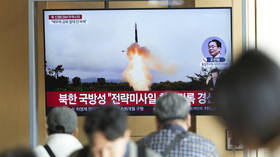Modi government ramps up spending before Indian election

The Indian government on Thursday presented the country’s interim budget for the 2024-25 fiscal year starting in April, indicating a continuation of its key economic policies focused on transforming into a developed country by 2047.
This is the sixth budget introduced in parliament by Finance Minister Nirmala Sitharaman, and will be the last of Prime Minister Narendra Modi’s second term. The government will unveil the full budget in July after a general election scheduled for May, in which the Modi-led Bharatiya Janata Party (BJP) is expected to make a clean sweep.
In her speech, the finance minister noted that the country’s economy had witnessed “a positive transformation” in the past decade, and that the government “overcame challenges” faced by people before 2014, when Modi came to power.
Sitharaman informed legislators that the government aims to significantly narrow its budget deficit in the fiscal year 2024-25 to 5.1% of gross domestic product (GDP). She also revised the deficit projection for the current fiscal year downward by ten basis points to 5.8%.
The announcement comes weeks after the Reserve Bank bumped up its GDP growth projection for the current fiscal year to 7%, from a previous estimate of 6.5%.
The interim budget is a “reflection of the aspirations of a young India,” Modi asserted in a video message following the presentation. He noted the capital expenditure for the upcoming fiscal year had been raised to a historic high of 11.1 trillion rupees ($134 billion) while keeping the deficit under control. Although the sum marks an 11% jump from last year, it is less than the nearly three-fold annual increases the country has seen since 2019.
Among the “important decisions” taken by the government’s economic bloc, Modi noted the allocation of one trillion rupees ($12 billion) for research and innovation and tax relief for start-ups. “This Budget gives the guarantee of making India a developed nation by 2047,” he stated.
Several welfare initiatives were announced, including providing concrete houses for 20 million impoverished households in the next five years, in addition to the 30 million such homes already built under a special scheme launched in 2015. Modi also emphasized increased efforts at fostering employment opportunities and skill development to advance conditions in rural areas.
For the middle-class population living in rented homes, slums, and unauthorized colonies, the government will launch a housing construction program. According to Neeraj Bansal from KPM, as cited by Bloomberg, the initiative is a welcome move as ‘housing for all’ is a significant marker of a developed country.
Experts cited by Indian media noted that the budget lacked a large increase in funding for welfare schemes or changes in taxation policies. “This is an indication that the ruling BJP is feeling fairly confident about securing another big victory in the upcoming general election,” Shilan Shah from Capital Economics was cited as saying by Reuters.
Where India Meets Russia – We are now on WhatsApp! Follow and share RT India in English and in Hindi












